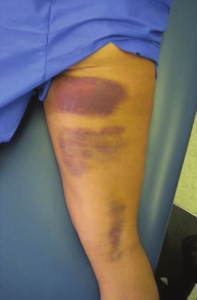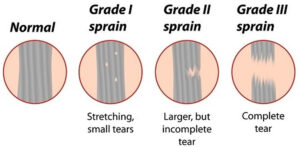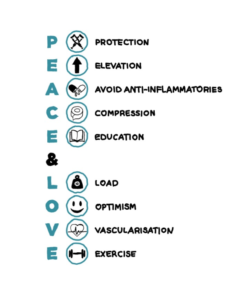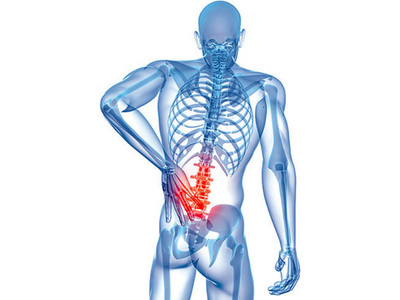The hamstrings are involved in a host of athletic motions that include running, jumping, and kicking. Hamstring function is important to the performance of most sport-related activities, particularly when fast running is required. Furthermore, dancers exhibit a high incidence of muscle injuries. The relevance of hamstring injuries in sports is therefore paramount.
At a higher professional level, most teams, coaches, and the physios on board are aware of the risk factors that may cause hamstring strain and do add a prevention program or prehab just to prevent anything during the peak playing season.
Before we get into details of ,what hamstring exercises should one do, lets try to further understand the injury and the basic anatomy of “the hamstrings muscles”.
What is Hamstrings?
The hamstrings are the back of the thigh muscles. Understanding their anatomy can help you understand why hamstrings pain. Or why does hamstrings injury occur? Or is the hamstring injury serious or not?
ANATOMY:-
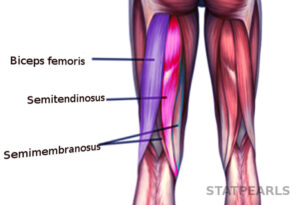 The hamstrings are a group of four muscles located on the back of the thigh. Semitendinosus (ST), Semimembranosus (SM), and biceps femoris long head (BFlh) all have their origins at the Hip (that is the pelvis), whereas biceps femoris short head (BFsh) originates along the thigh bone from a particular point.
The hamstrings are a group of four muscles located on the back of the thigh. Semitendinosus (ST), Semimembranosus (SM), and biceps femoris long head (BFlh) all have their origins at the Hip (that is the pelvis), whereas biceps femoris short head (BFsh) originates along the thigh bone from a particular point.- This group of 4 muscles ends at the knee.
- Of the 4 muscles biceps femoris is a 2 joint muscle that is it acts in the hip as well as the knee.
- These muscles help in flexion and extension at the knee, they also help in extension at the hip.
- Other than that they help in controlling the amount of flexion happening at the hip by forming a couple with the hip joint flexors and they are also active when the leg is kicked outward from the hip, that is abduction.
Along with this information, there are some important biomechanical functions of the hamstring muscles, which must be understood.
BIOMECHANICAL CONSIDERATION:-
- The Hamstring muscle group functions over 2 joints and is therefore the hamstrings stretch at more than 1 point.
- When challenged to perform high-velocity fast actions, the hamstrings are the group of muscles that can generate power through fast twitch fibers and hence that also makes it predisposed to injury.
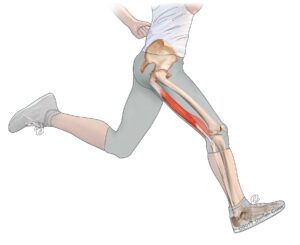
- Particularly biceps femoris is the most commonly injured muscle the reasons which could be:-
- There are 2 nerves that innervate the muscle. Sometimes this may lead to improper stimulation of the muscle reducing its capacity to generate effective tension in turn affecting the movement and leading to injury.
- The starting point of the muscle is extensively on the thigh bone. Weakness in the same affects movement not just at the knee but also at the hip.
- The muscle ends on the shin bone below the knee and has fascial connections with one of the ankle muscles namely the peroneus longus. So if there is a previous history of knee \ankle injury, it could later function of the joint at the shin level thereby affecting the functioning of this muscle? (speculative)
- The hamstring group of muscles especially semimembranosus is closely linked to the knee joint and the ACL ligament via mechanoreceptors. The feedback received from ACL ligament when disturbed affect the hamstring activation increasing the chances of injury.
- There is a deep anatomical link between the hamstring, the lower back, and further muscles above the lower back via the superficial back line as explained in the concept of anatomy trains. Hence sometimes a tight lower back can increase the chance of a hamstring injury.
- Posterior compartment syndrome of the thigh caused by chronic exercise or following recurrent minor distension injuries or muscle Ruptures-Fasciotomy.
HOW THE HAMSTRINGS STRAIN INJURY OCCURS?
Most people try to understand “why the hamstrings pain” and this article can answer that by making you understand the mechanism or how the HSI occurs. Researchers have reported 2 different injuries-a ‘high-speed running type’ (in sprinters) and a ‘Stretching’ type (in dancers).
Hamstring stretch injury
stretch-type injuries concluded that injuries occur due to extensive hip flexion with simultaneous knee extension. In Australian football, a total of 19% of hamstring injuries occur during kicking, which is a typical stretch-type hamstring injury, given that the end of a kick exhibits both a flexed hip and extended knee position. In addition, suggested that trying to pick up a ball from the ground while running at full speed is the most common hamstring injury situation.
extension. In Australian football, a total of 19% of hamstring injuries occur during kicking, which is a typical stretch-type hamstring injury, given that the end of a kick exhibits both a flexed hip and extended knee position. In addition, suggested that trying to pick up a ball from the ground while running at full speed is the most common hamstring injury situation.
Strength-related hamstring injury
Fatigue while playing football may reduce eccentric hamstring strength, which was suggested to increase the risk of a hamstring injury, while lower hamstring strength endurance was associated with a hamstring re-injury. One study compared muscle activity in athletes with previously injured and uninjured hamstrings and reported that the previously injured athletes had inferior hamstring activation, which contributes to lower hamstring strength. These findings are most probably related to risk factors for suffering a subsequent injury, which may in turn help to improve rehabilitation, rather than being related to the mechanism of a hamstring injury
- The initial loss of flexibility and strength was greater in the sprinter than in the dancer.
- However, the actual return to sport took longer in the dancer (52 weeks) when compared to the sprinter (16 weeks).
- The MRI findings of the sprinter showed involvement of the muscular tissue while the dancer had more proximal tendon involvement.
So Yes as per the research how your leg was injured will make a difference along with the history of previous injuries, age, fitness, and the surface on which the sport is conducted
FOOTBALL is the only high-speed sport where there is a possibility of having this injury due to an overstretch or strength-related issues
RISK FACTORS INFLUENCING HAMSTRING INJURIES: –
The recent researches differentiate these factors into two different categories non-modifiable and modifiable risk factors:-
Non-Modifiable risk factors include: –
- Age: – older athletes have a history of injury which makes them vulnerable to a HIS. “old” is difficult to define the cause of HSI. Can influence as early as 24 years of age. The other issue with older athletes is their structural changes, fiber type changes in the muscle, and reaction timing issues which can be the reason they are more susceptible to injury.
- Previous HIS: – previous injury can result in structural and neurological injury and result in maladaptation in the form of improper muscle activation of the hamstring muscle, strength deficits, or shift of the muscle load on the shorter units within the hamstring muscle group. Also the longer the deficits in the muscle, the lower the ability of the muscle to handle stress and strain.
- ACL injury: – research has claimed 70% of the players post ACL injury are susceptible to a HIS> the mechanism could be proprioceptive deficits, post-op weakness due to graft removal, or altered gait pattern could be the reason.
- Previous Knee injury, Ankle ligament injury or Calf strain injury: – either of these or in combination change the mechanics of the lower body when it functions in sport, leading to increased chances of an injury.
Modifiable risk factors:-
- Architecture and structure– biceps femoris fascicle length, and hamstring muscle-tendon unit stiffness were associated with risk but the level of evidence is low over various articles.
- Strength and strength-endurance tested in single-leg bridge or Nordic eccentric curls did point out a risk but there is conflict. Low eccentric strength as tested in Nordic does not mean you are predisposed to HSI. Nor does isokinetic testing reflect on HIS possibility.
- How high you jump or the power generated does not matter but a reduced single-leg hope distance means that you are susceptible to a hamstring strain.
- Research says that flexibility-related issues do not have any relation with HIS.
- Reduced trunk muscle activity and increased activity in one of the hip muscles found in athletes running at the speed of 12-15km/hr have an increased risk of HIS.
- When kinematics or how effectively your run was measured, runners with increased side bends while running and anterior pelvic tilt in the back swing phase of the leg have high chances of a HIS.
“MODIFIABLE LIST OF FACTORS CAN BE WORKED UPON DURING A PRESEASON TRAINING SESSION OR IN GENERAL WITH PREHAB PROGRAM SPECIFIC TO THE SPORT”
CLINICAL SYMPTOMS:-
- Pain in the back of the thigh, sometimes under the butt as well
- Swelling and Ecchymosis present may be delayed for several days post-injury
- Back of thigh muscle pain may be sensitive while touching or pressing.
- Reduced Range of motion: – not able to bend the knee, not able to kick back with knee straight, not able to turn hip from side to side… all these are restricted when a resistance test is done and indicate there might be a pulled hamstring.
- Not being able to lift your leg straight up means you are not able to bear the hamstring stretch due to injury.
- Taking off the shoe test positive- check out the link to know more about this test.
HOW DO WE GRADE THE SEVERITY OF HSI?
There is a continuum of symptoms from muscle soreness to a muscle tear here is a breakdown as per the severity: –
- Grade 1 tear: – only a few muscle fibers are strained. The symptoms are as low as just a minor discomfort at the back of the thigh and you may be able to continue your activity as well. Normally the athlete does not experience strength loss in such minor strain. You experience soreness usually the next day and may be able to job but THERE MAY BE PAIN WHILE RUNNING AT A HIGHER SPEED.
- Grade 2 tear: – this is also called a partial tear where more muscle fibers are disrupted. The strength loss and the discomfort is obvious. The athlete usually grabs the back of the thigh and has to stop or discontinue playing. There is tenderness in one spot and in some cases bruising may be seen in a few days.
- Grade 3 tear: – there is a complete rupture of the muscle that usually occurs at the biceps femoris muscle near the origin point at the hip bone. There is a massive hematoma, loss of muscle function, and severe disability to even walk. Usually, the player is taken out on a stretcher in the field.
IF YOU ARE LOOKING OUT FOR A CONSULTATION CONNECT WITH US ON THE WHATSAPP CHAT BOT
EXAMINATION:-
- During the history when we first encounter the client we try to understand the daily routine, how the injury occurred and the whether the player is a weekend warrior, semiprofessional, adolescent or a professional athlete.
- Occupation and lifestyle can also have an impact in building up the injury, hence we ask a few questions related to that as well
- How did the injury progress and what steps were taken immediately is noted?
- Then we try to understand how are the symptoms behaving while playing the sport and what activities are worsening the pain.
- A thorough examination go the muscle the lower body joints as well as the lower back is done.
- A movement analysis of the lower body which is a mix of simple and sport related movement is checked and finally a diagnosis is concluded.
- Some injuries may require ultrasound or an MRI, which are usually communicated to the client. Most injuries do not require acute MRI; however, MRI is useful in proximal and distal injuries as well as muscle belly tears that fail to respond to nonsurgical treatment.
MANAGEMENT OF HAMSTRING INJURIES: –
Most hamstring injuries when in their acute stage are managed with a RICE protocol…but the newest research says we must manage injuries with PEACE and LOVE
Hamstring injuries can be separated based on proximal, muscle belly, and distal injuries, with proximal and distal injuries more commonly requiring surgical intervention. Acute repair of proximal avulsions, both partial and complete, result in successful outcomes, whereas chronic complete repairs are more difficult and less reliable.
There are various research studies trying to promote PRP injections for muscles hamstring but they do not have substantial evidence and can be totally avoided.
HAMSTRING EXERCISE FUNDAMENTALS: –
Exercises for hamstring injury are very simple, but really each individual needs some individual change as per their body type and hence we follow this set of principles
- Diagnosing the severity of the injury, ruling out any lower back involvement, and planning a rehab program based on previous injury history and the level of sports involvement.
- There some criteria’s when PHYSIOTHERAPY IS NOT RECOMMENDED: – when there is a grade 3 strain or a complete tear with a massive hematoma, especially the proximal tendon attached on the top is involved.
- We do not recommend complete bed rest for hamstring strains of mild or moderate grades.
- We also do not recommend massage after the hamstring strain.
- Icing and early knee and hip movements reduce the injury rehab time, prevent tightness hamstring, and help in a better scar remodeling
- Early neural tissue mobilization to prevent any adhesions between the nerve and the surrounding tissue
- Working on general leg mobility and stability along with eccentric hamstring strengthening early in the rehab, so that the player can get back to the game faster.
- Providing supportive treatments for pain relief while guiding the injured player towards a progressive loading program.
- Guiding the injured player towards a progressive running program.
- Introducing speed agility and power drills once the injured leg strength has reached the 90% capacity of the non-injured side.
- Following a return to play program before getting back to full-time sports.
- Ensuring timely checks to prevent a recurrence.
- Following a preventive rehab program.
PROGRESSIVE RUNNING PROGRAM FOR HSI: –
While you are going through your rehab, is of utmost importance that a running program is being followed which u start early in the rehab to properly rehabilitate the hamstring muscle post-injury. The principles of this program are as follows: –
- Running program starts 48 hours after injury.
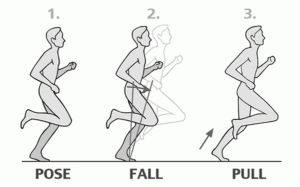
- 20-minute running sessions twice a day.
- Preceded by 10 minutes of gentle hamstring stretching.
- Commences with jogging with short stride (shuffle).
- Patient encouraged to increase stride length and pace gradually over the session as the ache allows.
- Interval running over 100 m (~110 yd) with acceleration, maintenance and deceleration phases.
- If there is even the slightest increase in pulling sensation through the hamstring, then the session must immediately cease. The athlete should apply ice and the program can be attempted again as early as the next 12 hours.
- Finish with 10 minutes of gentle hamstring stretching and then apply ice to the injured area for 10 minutes.
PREVENTION OF HAMSTRING INJURIES: –
Most professional teams concentrate on preventing the hamstring strain so much because research has made it stand clear that a moderate strain will keep repeating and cause waste of time and resources for that team.
For example: – doing a list of standing hamstring stretches before the game can help prevent hamstring injury or incorporating Nordic hamstring curl and prone leg curls as a part of the hamstring strengthening program during pre-season training sessions can ensure prevention of torn hamstring cases during the season
check out this set of 3 prevention exercises we recommend for all athletes to prevent hamstring injury
Many a team’s design their own prevention program as per the sport while footballers usually try to follow the FIFA 11 program.
The FIFA 11+ warm-up program is effective for preventing injuries in soccer players of both sexes aged >13 years. FIFA also recommends a goal keeper warm-up program available on their website
When is surgery recommeneded in hamstrings strain?
Acute injuries: III-degree strain/tear of the muscles, large intramuscular haematomas & complete hamstring muscle-origin rupture
Chronic injuries:
- Hamstring syndrome-wherein there is shortening & fibrosis in the hamstring origin near the ischial tuberosity-division and excision of the tight adhesions.
- Myositis ossificans-after a single injury or after repeated injury and especially involving muscle hematomas close to the bone.
RETURN TO PLAY POST HSI:-
whether you can return to play early or late depends on how you score on the strength and flexibility tests, functional field tests, the severity of your injury, response of the player to the management strategies.
Another common question players ask is
“how much time before I return to play again?”
So clinicians usually use the information and clinical assessments like hamstring strength, pain level at the time of injury, number of days from injury to pain-free walking, and area of tenderness measured on initial evaluation to estimate time to RTP.
For instance, a mild hamstring strain with no previous history of hamstring injury or lower body injury can return to play within 12 to 18 days.
Here are some criteria to decide whether you will get back to the game early or late.
A more conservative approach |
More rapid return-to-play
|
| 1. Persisting strength deficit
2. Persisting flexibility deficit 3. cannot complete full training without pain/limp 4. US/MRI: large areas of abnormalities 5. Older player 6. Early stage of season 7. 100-m Sprinter/Player in a high-risk position 8. High risk location (involvement of biceps)
|
1. Strength of injured side=uninjured side
2. Flexibility of injured side=uninjured side 3. Can do all functional activities at training 4. US/MRI: normal 5. Younger player 6. Play-off/must win position/no replacement 7. Low-risk position (e.g. Goalkeeper) 8. Low risk location (semimembranosus)
|
SUMMARY:-
- Vital to start early rehab in case of mild and moderate hamstring strains.
- Avoid complete bed rest and don’t stop jogging.
- Be careful 4-10 days after injury. A complete clinical examination during this period will give a better picture of the contractile elements.
- Not all Hamstring injuries are the same. Those with severe acute symptoms can heal quickly than those with less initial acute symptoms.
- Never to underestimate an acute Hamstring injury.
- Some MRI gives excellent information, can tell if the proximal free tendon is involved & the prognosis.
REFERENCES: –
- Danielsson, A., Horvath, A., Senorski, C. et al.The mechanism of hamstring injuries – a systematic review. BMC Musculoskeletal Disorder 21, 641 (2020). https://doi.org/10.1186/s12891-020-03658-8
- Green B, Bourne MN, van Dyk N, et al Recalibrating the risk of hamstring strain injury (HSI): A 2020 systematic review and meta-analysis of risk factors for index and recurrent hamstring strain injury in sport British Journal of Sports Medicine 2020;54:1081-1088.
- Arner, Justin W. MD; McClincy, Michael P. MD; Bradley, James P. MD. Hamstring Injuries in Athletes: Evidence-based Treatment. Journal of the American Academy of Orthopaedic Surgeons 27(23):p 868-877, December 1, 2019. | DOI: 10.5435/JAAOS-D-18-00741.
- Posterior Thigh Pain: with Anthony Schache from Clinical Sports Medicine by Peter Brukner and Karim Khan



